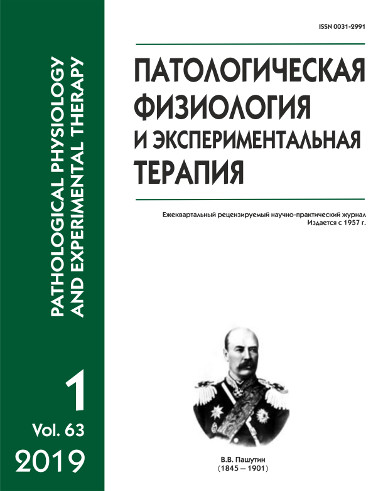Effects of nickel chloride on indices of hemocoagulation and lipid peroxidation in rats
Abstract
The aim. To study the state of the hemostasis system in chronic nickel intoxication and to investigate the relationship between hemocoagulation indices and lipoperoxidation processes in rats. Methods. Experiments were carried out on male Wistar rats (n=50, 230–250 g). A solution of nickel chloride (5 mg/kg) was administered daily intragastrically for two weeks, one and two months. At the end of the experiments, indices of platelet and coagulation hemostasis systems, anticoagulant and fibrinolytic activity of blood plasma, and activities of lipid peroxidation and antioxidant enzymes were studied. Results. Hypercoagulative changes in indices of the coagulation system were observed in rats after two weeks and one month of intoxication, including increased platelet aggregation and fibrinogen concentration and shortened activated partial thromboplastin time and prothrombin time. During the same period, increased antithrombin and fibrinolytic activities were observed. The depressed activity of the cellular component of hemostasis evident as thrombocytopenia and impaired ADP-induced platelet aggregation was detected after two months of intoxication. A tendency to decrease in fibrinogen concentration was observed. The shortened activated partial thromboplastin time and thrombin time were associated with prolonged prothrombin time. At the same time, inhibition of the anticoagulant component of hemostasis (decreased antithrombin III activity), exhaustion of the fibrinolysis system reserve (delayed fXIIa-dependent euglobulin lysis), and a significant increase in soluble fibrin monomeric complexes indicative of thrombinemia were observed. After two weeks, one and two months of nickel intoxication, a correlation was found between the major indices of the hemostasis system and the activities of lipid peroxidation and antioxidant enzymes. Conclusion. The study confirmed a relationship between the lipid peroxidation activity and the hemostasis system, specifically in chronic nickel intoxication. This result allows to recommend the use of antioxidants in developing methods for correction of hemostatic induced affected by heavy metals.






